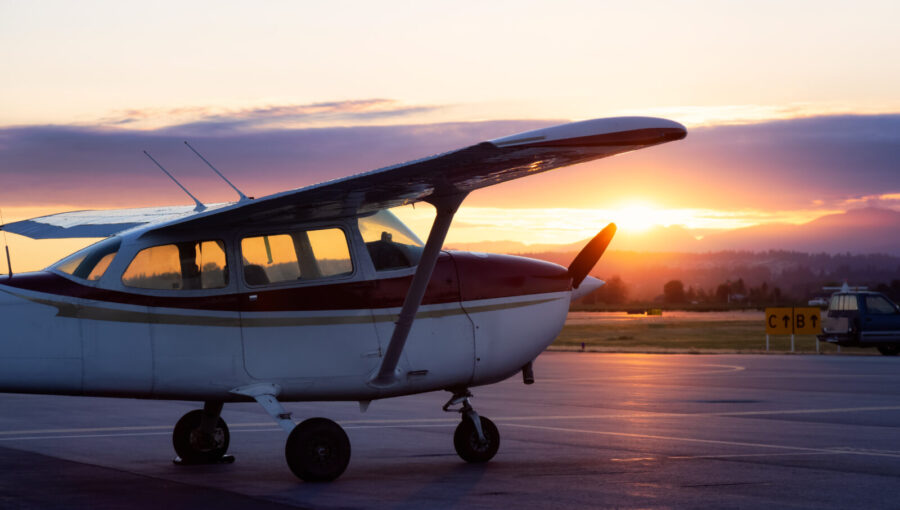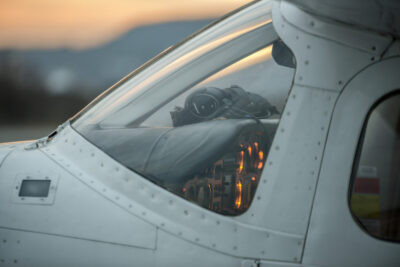What’s the Difference Between ANR, PNR and DNR Aviation Headsets?
17 February 2022 | Updated on November 24, 2024
Whether you’re flying a commercial jetliner, small Cessna or military helicopter, the cockpit can be a noisy place. And that noise can be extremely fatiguing and even harmful, especially on longer flights. That’s why it’s so important to use a headset that adequately suppresses or cancels any outside noise, allowing you to concentrate on your flying duties and protect your precious hearing.
Hundreds of different models are available on the market today, each with its own features. But how can you possibly know which aviation headset is right for you, with so many options out there? To help you make an informed decision, we created an extensive aviation headset buying guide some time ago, which has now become are most read piece of content on Hangar.Flights!
Because of the importance of aviation headsets as a hearing protection tool, we’re going to focus more on the noise reduction technology found in aviation headsets, namely ANR, PNR and DNR.
Why is Noise Reduction Important?
Before we dig deeper into aviation headsets and their different noise reduction (NR) technologies, let’s first take a look at why we need aviation headsets in the first place.
The aviation headset is an important piece of equipment in any aircraft. It does what its name suggests: it allows you to communicate with other crew members, passengers, other aircraft and ATC. But that’s not all it does, its other main job is to protect your hearing.
A bit of theory to illustrate why this is important:
Our human hearing system is sensitive to sound frequencies between 20 Hz and 20,000 Hz and amplifies the sound between 2,000 and 5,000 Hz, since that’s where our human voice is situated. While sound frequencies are measured in hertz (Hz), the volume or intensity of sound is expressed in decibels (dB). A quiet room is around 40dB and a normal conversation around 50-80dB. Our hearing is sensitive to these so-called sound pressure levels (SPL), but it’s also very vulnerable to sounds with higher intensity, such as a rock concert or, more importantly in our case, airplane engines (120-130dB).
When you are exposed to sounds of 90dB and more, you risk damaging your inner ear, resulting in temporary or worse, permanent hearing loss.


Pilots are exposed to high volumes, and usually in low frequencies, often for long periods at a time. A busy flying schedule, especially as a commercial pilot, often means flying many hours a day, which adds up quickly to significant exposure time.
That’s why having a decent aviation headset is crucial, not only for safety when flying, but also to protect your own ears. Since hearing loss is irreversible, prevention is always better than cure.
Now, let’s take a closer look at the noise reduction technologies used in modern aviation headsets.
What is Passive Noise Reduction (PNR)?
The most basic technology of noise reduction aviation headsets is Passive Noise Reduction (PNR). This aviation headset technology works very simply by acting as an earmuff.
The headset earcups create a physical barrier between your ears and the outside world. Noise suppressing foam fills the earcup cavity and passively reduces the noise by sealing off sounds that come from outside the headset.


This method does not require power or batteries and can be found in aviation headsets at a much lower price point.
The one downside to this technology is that it only works if you have a good seal around your ears, which can be a bit tricky to achieve, especially if you wear glasses. The headset earcups need to fit very tightly around your ears for the passive noise reduction aviation headsets to work properly.
Some popular PNR aviation headsets include the Faro G2 PNR, the Rugged Air RA200 and Kore Aviation KA-1. Most in-ear aviation headsets, like the Faro Air, also use standard earplugs as a way to passively reduce noise (PNR).
What is Active Noise Reduction (ANR)?
While PNR aviation headsets work well, they do have some limitations. This led manufacturers to develop Active Noise Reduction (ANR) aviation headsets, which provide a more superior noise reduction technology.
What makes an aviation headset with active noise reduction so effective is the way it tracks and measures incoming sound. Electronics inside the headset remove or suppress unwanted aircraft noise, by ‘listening’ to incoming sound and creating a counteracting sound wave with the same amplitude, but inverted phase.
The separated inverted noise is mixed with the original signal, which results in the noise and inverted noise-canceling each other.


These headsets are usually battery-powered and use a filter to separate the wanted signal from the unwanted signals, usually below 300Hz.
Active noise reduction headsets can usually obtain a noise reduction of 10-20dB, which means at 20dB, the noise is only 1/100th of the original level. Since you don’t want to block wanted signals, like alerts or a sputtering engine, ANR headsets only block frequencies below 300Hz.
ANR headsets are in most cases more expensive than their passive noise reduction counterparts, but if you ask us, very much worth the slightly higher purchase cost.
Some popular PNR aviation headsets include the Faro G2 ANR, Lightspeed Zulu 3 and Bose A20.
What is Dynamic Noise Reduction (DNR)?
Besides Passive and Active Noise Reduction aviation headsets, you can find some aviation headsets on the market that use Dynamic Noise Reduction (DNR) technology, a sort of hybrid between passive and active noise reduction aviation headsets.
These are more expensive than ANR headsets, but are lighter and provide an extra level of noise-canceling by using digital electronic techniques to remove noise components from the incoming headphone signal. DNR headsets achieve this by digitizing signals in a series of numerical values, which are then processed to look for repetitive noise signals and remove noise components.
DNR headsets suppress noise by 15-25dB and noise signals of up to 3,500Hz can be detected and canceled.
DNR headsets are less common, because of the increased cost over ANR headsets while having similar noise reduction levels. The lack of demand for this aviation headset technology is reflected in the limited number of manufacturers that currently make aviation headsets with DNR.


Which Should you get, ANR, PNR or DNR?
Finding the right aviation headset really depends on the type of flying you do and your own preferences.
If you are an occasional ‘weekend’ aviation pilot or just starting out as a student pilot, a passive noise reduction aviation headset is probably more than sufficient for what you will be using it for. These aviation headsets are much cheaper than active noise reduction aviation headsets and will provide satisfactory noise reduction levels at a fraction of the cost.
If you are flying more frequently and longer hours on end, you might want to consider an active noise reduction aviation headset. This is especially true for those who fly in noisy cockpit environments.
We personally recommend aviation headsets with active noise reduction, as they provide the best value for money and offer better noise reduction. Protecting your hearing is crucial in aviation, and the best way to achieve this is by wearing a headset with proper active noise reduction, since these will significantly reduce the noise you are exposed to.
In any case, be sure to check out our reviews of aviation headsets before making a purchase. Oh, and we also recommend checking out our definitive headset buying guide, where we list other important features to look out for, together with the best aviation headset options for any budget:
Happy flying!


































